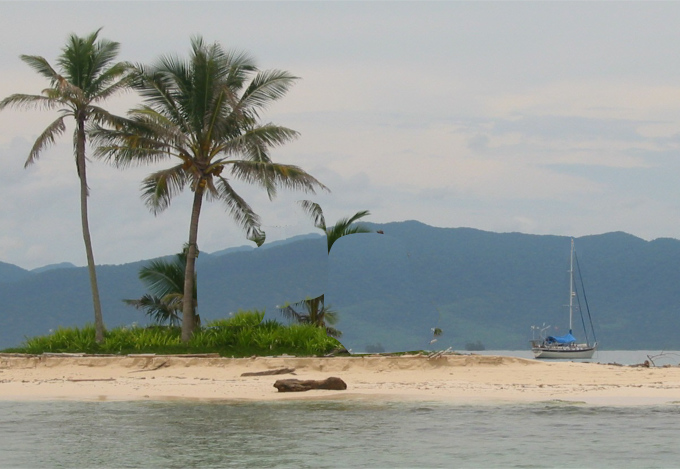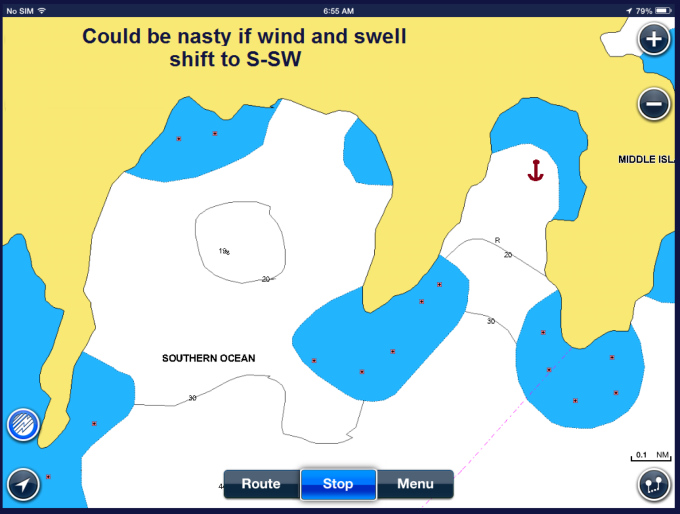The Blue View - Selecting an Anchorage
/There is a host of criteria that determine whether an anchorage will be safe and, slightly less importantly, whether it will be comfortable. At the very least, the anchorage should provide shelter from the waves and swell, and it would be nice if the boat wasn't rolling gunwale to gunwale all night.
To begin with, we make sure we have an adequate chart for the area. A great deal of information can also be gleaned from local cruising guides, pilots and sailing guides. Before sailing to a new area, we seek out any cruisers that have previously anchored there. Local fishermen, while probably not willing to share information about the best fishing spots, are usually happy to provide information about anchorages.
Many anchorages can be delightful in some weather conditions and untenable in others, so it is important to know what the weather will be doing. Should we expect a wind shift, either because of the diurnal land effect or because of a change in weather? How much wind can we expect?
Once we have tentatively decided on an anchorage, there are a number of other things to consider:
- What are the depths? Too shallow for our draft? Too deep, requiring more scope than there is swinging room and thus requiring a second anchor or lines ashore?
- What are the depth contours like? Does the anchorage shallow gradually or steeply? Will we be anchoring on the edge of a shelf that drops off sharply?
- What hazards exist, both on the approach and in the anchorage? Will we need to track our route in, in case we need to leave in the middle of the night? Is it even feasible to exit in the dark or pouring rain with little or no visibility?
- How is the holding? How close are the hazards if we drag? Will we be up all night standing an anchor watch?
- How is the approach if the wind shifts and the seas build? Some anchorages are near impossible to get in and out of when the surge and waves begin breaking across the entrance.
- How crowded is the anchorage? A crowded anchorage often means the other boats are using short scope. If the wind direction changes and/or increases, boats may quite likely drag or we may swing into them.
- How much tidal swing can we expect, and at what stage will the tide be when we drop the hook. If there are large tides, we need enough scope to keep us secure at high tide, but at the same time we need to assess whether we will be in danger of swinging into a hazard or going aground at low tide.
- Are there tidal or other currents? A strong current may put the boat broadside to the wind and/or waves, making for a very rolly night.
- How does the swell enter the anchorage? What seems like a protected spot may see waves that hook around headlands or wave reflections that will make the anchorage very uncomfortable.
- If the wind shifts, will we be on a lee shore? Will we swing into any hazards?
- If the wind shifts, how much fetch will we be exposed to?
Once we make the decision to drop the hook in a particular anchorage and start making our way in, if there is any doubt about being able to navigate back out in the dark, we track our route on our chartplotter. On more than one occasion, the winds did not do what they were predicted to do and we found ourselves on a nasty lee shore with the wind blowing at gale force accompanied with sheets of rain. A hasty departure in the middle of the night with very little visibility was necessary. We may or may not have been able to extricate ourselves through the rocks and reefs without the chartplotter track, but having it as an aid greatly reduced the stress of the situation.
Once we've worked out which anchorage we'll be spending the night in, the next decision is picking the right spot in the anchorage. Stay tuned for the next Blue View.




